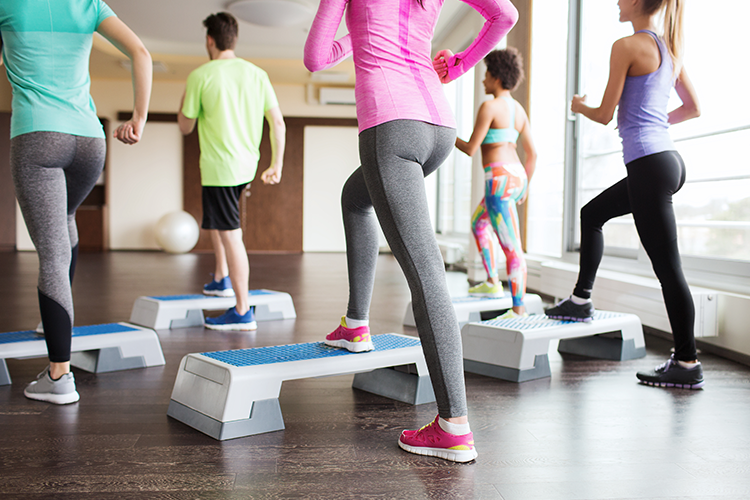Blog
Exercise and chronic disease
 We talk a lot about diet here at That Sugar, and its implications on health. However other lifestyle factors have a big role to play too – including exercise. And a new study reveals just how important it is to get your body moving!
We talk a lot about diet here at That Sugar, and its implications on health. However other lifestyle factors have a big role to play too – including exercise. And a new study reveals just how important it is to get your body moving!
Lowering disease risk through movement
Researchers from University of Washington and Dartmouth College in the U.S., and University of Queensland in Australia, undertook a hefty meta-analysis of 174 studies from 1980-2016, to assess a dose-response relationship associated with amount of exercise undertaken, and risk of a particular chronic disease.1
And they found reduced risk for breast and colon cancers, type 2 diabetes, heart disease and stroke with a little daily exercise – though the more exercise undertaken, the better the benefits!
How much
Current recommendations are to engage in physical activity for 600 metabolic equivalent (MET) minutes a week. This looks like 150 minutes of brisk walking and 75 minutes of running per week (being is 20 minutes and 10 minutes of each activity each day respectively).
To get an understanding of what MET means, here is how the WHO breaks it down:
“One MET is defined as the energy cost of sitting quietly, and is equivalent to a caloric consumption of 1 kcal/kg/hour…It is estimated that, compared to sitting quietly, a person’s caloric consumption is four times as high when being moderately active, and eight times as high when being vigorously active.
Therefore, when calculating a person’s overall energy expenditure using GPAQ data, 4 METs get assigned to the time spent in moderate activities, and 8 METs to the time spent in vigorous activities.”2
Those who were able to clock up 3000-4000 MET per week through exercise and incidental movement seem to reap the greatest benefits. As an example, the authors describe this as “climbing stairs for 10 minutes, vacuuming for 15 minutes, gardening for 20 minutes, running for 20 minutes, and walking or cycling for 25 minutes” each day.
However, the study authors note that even a slight increase from current activity levels will improve health!
A 2% decreased risk for type 2 diabetes was seen meeting the minimum recommended 600 MET a week compared to those who did not exercise at all. But crank the movement to 3600 MET per week, and risk is reduced by a further 19%!
Exercise can also support musculoskeletal health, and enhance mood and the brain function! So, not only would risk of chronic disease be reduced in the long-term, you will feel and function better in the short-term too – win-win!3-4
What this means and what to do
The study has significant implications for promoting health through physical activity in future.
We needn’t only focus on a dedicated boot camp session or Thursday night spin class. We can include movement in other aspects of life, such as mode of transportation, finding ways to move more at work, and remembering that time doing housework and gardening add up over a week!
For example, using what the study authors suggest, here are some ideas for how to pack in a good amount of movement daily:
- Climbing stairs for 10 minutes – can be done at work, home, or in transit. Choose the stairs over the lift or escalator each time.
- Vacuuming for 15 minutes – or something equivalent that helps get the daily household jobs done.
- Gardening for 20 minutes – this can be used as a time to unwind from the day. Don’t garden? Change it up and try yoga or swimming. Or use it as a chance to hang out with your mates and walk and talk with friends.
- Running for 20 minutes – your slice of dedicated exercise for the day.
- Walking or cycling for 25 minutes – this can be done getting to or from work or school, or having walking meetings.
It is recommended to include strengthening and aerobic exercise into your day-to-day if possible.
However, if you are someone who doesn’t exercise much, before throwing yourself into the gauntlet of a super-vigorous exercise regime, perhaps speak with a qualified healthcare professional for how you can ease into a routine that can gradually build strength and aerobic endurance.
And as we can see, incidental movement can add up and every extra bit will help.
So, limit the sedentary hours, and get up from the chair every hour, take the stairs, and get off the bus a stop early, to boost happiness and health!
By Angela Johnson (BHSc Nut. Med.)
References:
- Kyu H, Forouzanfar MH, Bachman VF, et al. 2016, ‘Physical activity and risk of breast cancer, colon cancer, diabetes, ischemic heart disease, and ischemic stroke events: systematic review and dose-response meta-analysis for the Global Burden of Disease Study 2013’, BMJ, 354:i3857
- World Health Organisation, Global Physical Activity Questionnaire (GPAQ) Analysis Guide, viewed 22 August 2016, <http://www.who.int/chp/steps/resources/GPAQ_Analysis_Guide.pdf>
- Gomez-Pinilla, F & Hillman, C 2013, ‘The Influence of Exercise on Cognitive Abilities’, Comprehensive Physiology, vol. 3, no. 1, pp. 403–428.
- Hogan, CL, Mata, J, & Carstensen, LL 2013, ‘Exercise holds immediate benefits for affect and cognition in younger and older adults’,Psychology and Aging, no. 2, p. 587.











